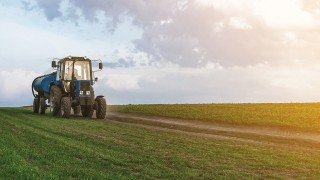Agriculture Sector Workgroup

Summary
The West Coast region is home to some of the largest and most varied agricultural economies in the country. Whether it be grapes and dairy in California, lettuce in Arizona, apples in Washington, or potatoes in Idaho, the West Coast region grows a substantial amount of the country's food. Agriculture relies on diesel-powered equipment which can often be many years old. Modern diesel technology emits orders of magnitude less pollution than legacy diesel equipment, and increasingly alternative-fueled equipment such as battery-electric are becoming available in the agricultural sector. Linked here is information related to advanced technology, funding, and projects West Coast Collaborative (WCC) has funded through the Diesel Emissions Reduction Act (DERA) program and others.
Funding Opportunities
Resources
EPA Resources
- Agriculture: This page provides information on regulations affecting agriculture, informational resources, and more.
- Agriculture Advisor Center: EPA's Agriculture Advisor's Office enables two-way communication between EPA and agriculture stakeholders about priority environmental issues.
- AgStar: The AgStar program provides resources about biogas recovery in Agriculture, a potential useful alternative fuel in the sector.
Department of Agriculture Resources
- On-Farm Energy Initiative: The Environmental Quality Incentives Program (EQIP) On-Farm Energy Initiative helps farmers and ranchers make voluntary improvements that can boost energy efficiency on the farm.
- Natural Resources Conservation Service (NRCS): The USDA NRCS provides farmers and ranchers in the United States with financial and technical assistance to voluntarily put conservation on the ground, not only helping the environment, but also agricultural operations.
- Environmental Quality Incentives Program (EQIP): EQIP provides technical and financial assistance to agricultural producers and forest landowners to address natural resource concerns, including air quality among others.
Other Resources
- California Air Resources Board's (CARB) Zero Emission and Hybrid Off-Road Equipment Inventory: Learn about the available zero-emission and hybrid agricultural equipment.
- Directory of State Food and Agriculture Agencies: State Food and Agriculture Agencies may have more information on local funding opportunities and resources for farmers and ranchers to reduce their diesel emissions.
Highlighted Work
The San Joaquin Valley (SJV) is California's largest agricultural region and the most productive agricultural region in the world, cultivating more than 250 crops. The SJV air basin is comprised of 8 counties and is surrounded by mountain ranges. The topography and weather of this region are conducive to the formation and accumulation of air pollution. The San Joaquin Valley Unified Air Pollution Control District (SJVAPCD) oversees air quality for central California and has successfully implemented billions of dollars in funding to voluntarily reduce harmful emissions throughout the Valley. SJVAPCD has several grant programs that provide funding for agriculture to reduce emissions.
WCC has supported several of SJVAPCD's incentive programs through WCC's DERA and Targeted Airshed Grant (TAG) programs over the years. See WCC's DERA Project List and EPA's TAG Funding List for project details.
One recently completed project provided 2019 DERA National funding to SJVAPCD to electrify agricultural distribution center yard trucks. This funding resulted in the replacement of 17 diesel-powered yard trucks operating at agricultural distribution centers throughout the Valley with zero-emission battery electric vehicles. Diesel fuel combustion generates greenhouse gases and air pollution that has serious human health and environmental effects. Zero-emission technologies such battery-electric or hydrogen fuel cell propulsion systems are becoming increasingly available and have no tailpipe emissions eliminating exposure to diesel exhaust.
Disclaimer
Reference to any specific commercial product, process, or service, by trade name, trademark, manufacturer, or otherwise, does not constitute or imply the endorsement, recommendation, or favor of West Coast Collaborative or its partners, including the United States Government.

